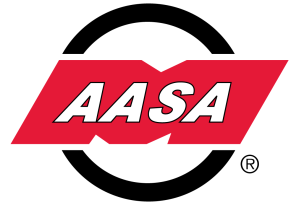Data challenges in the oil and gas sector — Chips for self-driving cars — NASA testing virtual reality headsets with astronauts
BI Intelligence
OIL AND GAS COMPANIES NEED TO OVERCOME DATA CHALLENGES TO LEVERAGE IoT: Oil and gas companies need to make better use of their data to take full advantage of IoT technologies, according to a recent Cisco survey of 50 industry executives and analysts.
- Nearly half of respondents (48%) said that leveraging data for better decision-making was the most common obstacle for oil and gas companies in using connected devices.
- The next most popular answer – cited by 28% of respondents – was the ability to deliver information in real time to the right decision makers.
Many oil and gas companies have already deployed sensors and connected devices throughout their operations, but sifting through the data they get from those devices to find what’s really valuable can be challenging. For example, only 1% of the data was analyzed from an oil rig with 30,000 connected sensors, according to a McKinsey report released last week. To make use of data and analytics in real time, Cisco recommended that oil and gas companies should:
- Leverage fog computing for remote assets like offshore oil rigs. An oil rig loaded with sensors produces at least a terabyte of data, according to Cisco, and it takes a long time to send all of that data back for analysis via a common satellite connection. By the time that data is analyzed, it is often useless. Deploying devices with fog computing capabilities at the oil rig would allow data to be analyzed locally without being sent to a data center. This will open the door to real-time insights.
- Use data virtualization to integrate data on demand. Normally, oil and gas companies rely on manual processes to integrate data from different sources. Data virtualization allows several data sets to be integrated together quickly regardless of how they’re formatted to speed up the integration process.
- Deploy analytics capabilities and link them to specific business processes and outcomes. Insights from analytics tools need to be integrated into everyday operations, and companies need to acquire talent with data science and IT architecture expertise.
HOW CHIPMAKERS NXP AND FREESCALE PLAN TO DOMINATE THE SELF-DRIVING CAR MARKET: Freescale, which will be merging soon with rival chipmaker NXP, has developed a new microprocessor specifically designed for advanced vehicle safety systems that power features like lane departure warnings and automatic braking to avoid collisions. The S32V234 has two image processing engines that enable it to perform cognitive tasks based on data from the cars’ surroundings. The microprocessor leverages Freescale’s S32V stereo video processor that allows the chip to visualize the car’s surroundings to make decisions like stop the car or alert the driver about a lane change.
In the long term, Freescale executives say that enabling these advanced safety actions will lead to powering autonomous driving. Freescale already has a majority of the car market using its 77 GHz radar system for detecting blind spots and adaptive cruise control. Integrating that with the S32V234’s ability to visualize cars’ surroundings and make complex decisions will be a major step toward cars safely driving themselves. BI Intelligence expects that advanced safety features like those powered by Freescale’s chips will lead to the commercial sale of self-driving cars by 2019.
NASA TESTS VIRTUAL REALITY TO ASSIST ASTRONAUTS: NASA’s Project Sidekick will provide astronauts on the International Space Station with a pair of Microsoft HoloLens virtual reality goggles to allow NASA engineers on Earth to better assist astronauts. NASA will stream a live feed from the HoloLens’ front-facing cameras so NASA engineers on the ground can see exactly what the astronauts see as they go about their tasks.
The HoloLens headsets will also allow the engineers on the ground to send images, blueprints, and visual instructions to the astronauts. For instance, if an astronaut is investigating a mechanical problem, the engineer on the ground could a picture of the valve that could be causing the issue to the astronaut’s headset. NASA said that it is experimenting with the headsets right now and plans to provide network connectivity with the headsets by the end of the year so astronauts on the space station can test these functions.
ALLSEEN ALLIANCE BUILDS ON INTEROPERABILITY EFFORTS: The AllSeen Alliance, an open source collaboration to promote interoperability of connected devices, announced a new capability that will allow devices running its AllJoyn software to communicate with connected devices using other interoperability protocols. For instance, developers could connect devices running AllJoyn with smart home devices running the Z-Wave protocol. Microsoft, which joined the AllSeen Alliance recently, contributed the code for the new capability, called the Device System Bridge.
BEAM’S CONNECTED TOOTHBRUSH: Startup Beam aims to bring usage-based insurance to dental insurance with its connected toothbrush. The toothbrush collects data that Beam can use to give its policyholders a premium discount for brushing well and often. Sensors on the toothbrush send the data to Beam’s smartphone app via Bluetooth radio. A software update will eventually enable the app to tell how much pressure the user should apply and which teeth need to be brushed more.
Beam’s insurance plan will launch in August with a nationwide network of 100,000 dentists and will cover usual procedures like cleanings and X-rays. Beam will provide the connected toothbrush, toothpaste, and floss for policyholders. The insurance plan will be targeted at small and medium-sized businesses, and Beam says it will be 10-25% less expensive than other plans. The plan is being piloted in Ohio, Kentucky, and Indiana.
